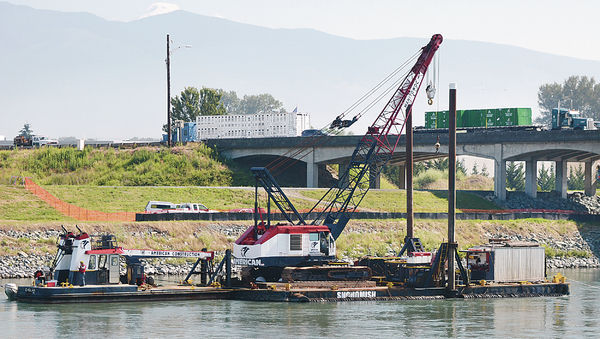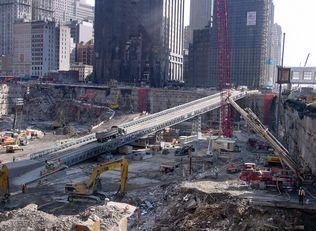Jerry Cornfield, The Herald
OLYMPIA — Tim Eyman’s thousands of supporters throughout the state may get a chance next year to put the anti-tax guru’s name on the rebuilt Skagit River bridge on I-5.
That’s because a Bothell man filed an initiative to the Legislature on Wednesday to emblazon Eyman’s moniker on the structure which collapsed after being struck by a truck with an oversized load.
Nicholas Santos filed the one-page measure to designate the repaired span as the Tim Eyman Memorial Bridge, “dedicated to the efforts of Tim Eyman to reduce Washington State tax revenues and the collapse of the Skagit River Bridge on May 23, 2013.”
Santos, who moved to the state two years ago, said in an email he’s not done much in politics and filed the measure to demonstrate the ease of getting active.
“My point is to show that anybody without a deeply political background can be involved,” he wrote. “It only takes $5 to file an initiative and it took me a few hours of research to figure out how to craft the text of the initiative.”
Daily Kos writer Wu Ming first suggested giving the collapsed span the new identity of the Tim Eyman Memorial Bridge in a May 24 piece on the national website.
Santos said he got his idea from a photo and meme distributed by Northwest Progressive Institute, a political think tank which has opposed every one of Eyman’s anti-tax measures.
“I took that and went one step further, upped the ante, and used the same tools Tim Eyman uses,” Santos said. “This is a tool of the people and I want it to be understood that most of the barriers are low. So there is no reason for it to be monopolized.
“Additionally, governments that are starved for cash as a direct result of initiatives and the obstructionism that we see in D.C., cannot adequately deal with infrastructure and that has real consequences,” he said. “Mockery is not my motivation, but I do want to send a clear message.”
While Santos may be using Eyman to make a point, followers of the Mukilteo initiative promoter may actually derive a bit of satisfaction from providing their hero with a permanent tribute.
Eyman isn’t interested, however.
“It’s always so silly when opponents of our initiatives attack me personally, as if I have tremendous power. I don’t,” he wrote in an email. “I have a great team who works super hard each year to give voters a greater voice in their government. Regarding our initiatives, some pass, some don’t, but all of them give the average taxpayer an equal voice in the process and that’s something I’m very proud of.”
And this isn’t the first time Eyman’s been the subject of an initiative.
In 2003, David Goldstein famously pushed Initiative 831 to proclaim Eyman a “horse’s ass” but that measure never made the ballot.
As an initiative to the Legislature, Santos must collect and turn in at least 246,372 signatures of registered Washington voters by Jan. 3. If he succeeds, the measure will be sent to the Legislature where lawmakers can enact it or do nothing which would send it to the November 2014 ballot. Lawmakers also could pen an alternative to place alongside it on the ballot.
Santos said Thursday he lacks the resources and organization to gather the signatures.
“I don’t have that kind of expertise,” he said. “If there is enough support for an effort of that scale, I would consider it.”
Meanwhile, several state lawmakers are interested in getting the bridge renamed in memory of Sean O’Connell, the Washington State Patrol trooper killed while working on the detour route during the bridge closure. O’Connell died after his motorcycle collided with a box truck May 30 near Conway.
Sen. Kevin Ranker, D-Orcas Island, and Reps. Jeff Morris, D-Mount Vernon and Kristine Lytton, D-Anacortes, said in June they wanted the state Transportation Commission to put O’Connell’s name on the span.
“Renaming the bridge in Officer O’Connell’s honor is just a small token of our gratitude for his 16 years of dedication to our state, but it doesn’t even begin to display the level of appreciation all Washingtonians have for his service or the heartache and compassion we feel for his family in the wake of his loss,” they said in a joint statement issued June 3.
Resolutions honoring O’Connell’s life and service that passed in the House and Senate on June 10 did not mention the renaming.





